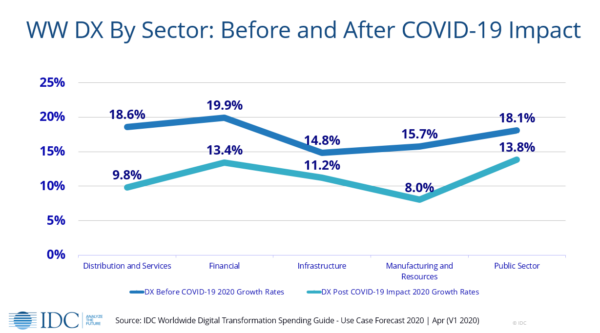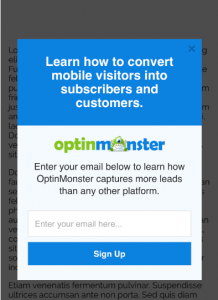According to George Westerman, MIT scientist and author of Leading Digital: Turning Technology Into Business Transformation, digital transformation (DX) “marks a radical rethinking of how an organization uses technology, people and processes to fundamentally change business performance.”
This change has been sought by more and more companies over the last decade. According to the IDC Worldwide Digital Transformation Spending Guide, global spending on digital transformation was forecasted to grow 10.4% in 2020 to $ 1.3 trillion. While, according to the same report, COVID 19 has decreased DX spending by more than $ 500M and slowed growth from 17.9% in 2019 to 10.4% in 2020, it still grew in spite of COVID.

However, this growth has not been proportionate in pricing and configure, price, quote (CPQ). Despite the fact that pricing is the most powerful profit lever companies have and studies have shown that it can improve business performance from .5% to 4% or more of revenue, Gartner reports spending on CPQ is less than $ 1.42 billion, and in 2019 grew at 15.5%, lagging the 17.4% increase in DX spending. Spending on Price Optimization and Management (PO&M) in B2B was less than $ 450M in 2019, which did grow at 21%, a greater increase than DX spending as a whole, but still a small fraction of DX spending considering the impact it has on the bottom line.
Gartner also found that as of the end of 2019 less than 1400 companies had deployed PO&M software, despite over 10,000 companies that could benefit from it. From the research I have personally done, I estimate this number to be higher, at about 60,000 companies making more than $ 100M in annual revenue that could benefit from a robust PO&M or CPQ digital transformation project.
The pandemic has awakened many companies to this need. For example, in the first 6 weeks after COVID-19 hit, G2 Crowd pricing software searches increased by 75%, quote-to-cash software by 48% and CPQ by 22%.
Whatever the story you take away from the numbers, one thing is clear: No modern company of any size or sophistication would dream of doing their order management, accounting or manufacturing with Excel or homegrown tools, yet over 54% of firms rely on Excel as their primary pricing tool and 66% rely on either Excel or homegrown solutions.
Where is the disconnect? While investments in Digital Commerce and CPQ are increasing, pricing optimization and management is sometimes getting overlooked. This is, in part, due to the fact that these software solutions have until recently been quite expensive to license and implement, with only companies earning $ 1 billion plus revenue having the resources to do so.
The purpose of this book is to educate executives investing in DX to make pricing, revenue management and quote-to-cash a priority in their future investments. In fact, it’s more than just pricing we are talking about here, it is really about achieving commercial excellence through digital transformation of revenue management and quote-to-cash as it relates to:
- How quotes are configured, priced and delivered to customers
- How that customer pricing flows into the order management system
- How off-invoice incentives (rebates and promotional programs) are set and managed
Keys to Pricing and Commercial Excellence
In this environment, there are several keys to commercial excellence around revenue management, pricing and quote-to-cash. What are they?
An Omnichannel approach and platform that enables the strategy and execution in a cohesive manner across all the channels you go to market in and allows for changes. The right omnichannel strategy might see the same price across all channels in some industries, but in many, you will be differentiating the price of your offer depending on the channel and situation. For example, if a customer is willing to wait a bit, they would receive a lower price; if they need something immediately, they will pay a higher one.
Customer-centric pricing strategy and tactics allow you to understand the unique value your solution brings to customers, how it is differentiated among them and from your competition. This works together with the omnichannel strategy, which also entails that you understand the buyer journey and what customers are willing to pay in different channels. For example, I am willing to pay more for a bottle of water in a hotel room than in an airport, and willing to pay more for that same bottle in an airport than in a grocery store.
In a collaborative approach, the process for setting, negotiating and realizing price in the market is cross functional across sales, customers, partners, marketing, and finance. You need to think of this as a collaborative process and instill that mindset in your commercial team and not an antagonistic culture between finance or pricing and sales that still exists at many companies today. You also need the tools that enable this collaboration quickly and efficiently across the organization.
Agility, the ability to adjust your pricing strategy and tactics as the market changes, incorporate new data, see what’s working and what’s not, and update as needed, is a key competitive advantage in more markets and industries every year. Pricing is becoming more dynamic every year, and the ability to respond to changing market conditions, whether it’s from cost, supply chain or competition, is key in outperforming the market and your competition going forward.
Pricing analytics and optimization should be integrated into everyday business processes, not in a standalone BI tool or Excel. The analytics should help your team make better decisions in the place where they are being made, driving workflow and approvals, etc. This is true in any industry, but especially in B2B, where customer specific pricing decisions are made with high frequency and impact.
One of the most tested and valuable applications of AI / Machine Learning today is in price optimization. Companies began using these technics in the 1980s and they have gained sophistication, ease of use, and scale since. It is simply not possible to compete with this with people and spreadsheets unless you want to employ a small army of analysts to do so, and even then, the results will not be as good, fast or precise.
Digital transformation of revenue management, pricing, commerce, and quote-to-cash processes is becoming table stakes in more and more industries. Companies that are not investing in this area will find it increasingly difficult to compete against those that are.
This article is an excerpt from my chapter of the book “Pricing—The New CEO Imperative: A Book from the Pricing Profession to the C-Suite“, edited for length and clarity. The book is available for purchase on Amazon.
Business & Finance Articles on Business 2 Community
(85)
Report Post









